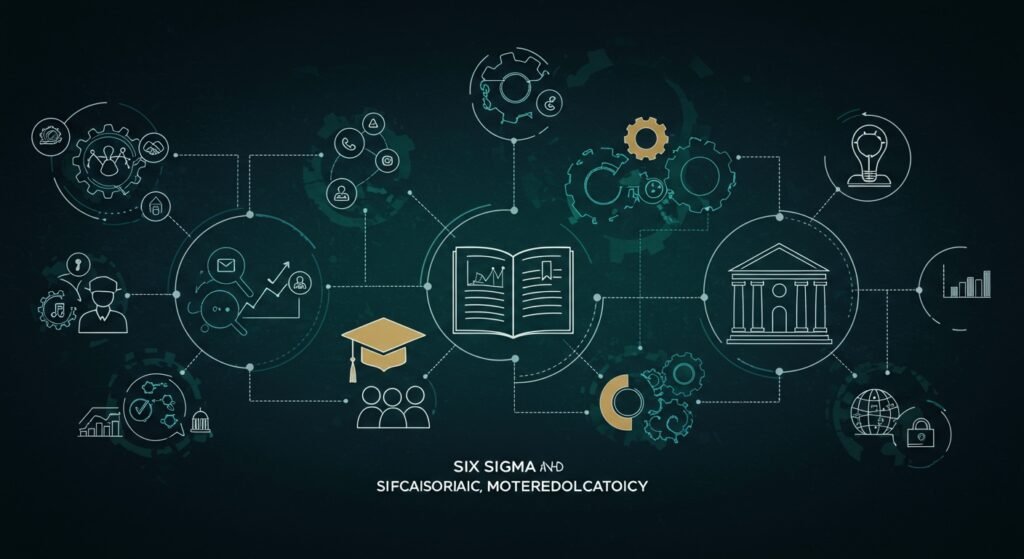Six Sigma and Lean Quality Methods in Higher Education: Revolutionizing Academic Processes
In an increasingly competitive and resource-constrained environment, higher education institutions are continually seeking innovative ways to enhance efficiency, improve student outcomes, and optimize administrative processes. This pursuit of excellence has led many universities and colleges to adopt principles from the manufacturing and service sectors, specifically the powerful methodologies of six sigma and Lean. These data-driven approaches, traditionally associated with industrial engineering and business management, offer a structured framework for identifying and eliminating waste, reducing variation, and ultimately delivering superior quality in academic settings.
Table of Contents
- Introduction to Six Sigma and Lean in Academia
- Why Higher Education Needs Quality Methods
- Core Principles of Six Sigma in Higher Education
- Lean Methodologies: A Complementary Approach
- Implementation Strategies and Best Practices
- Real-World Impact: Case Studies and Benefits
- Addressing Challenges and Ensuring Success
- Conclusion: A Future of Enhanced Educational Quality
Introduction to Six Sigma and Lean in Academia
The application of quality management principles in higher education is not entirely new, but the structured, rigorous approach of Six Sigma and Lean has gained significant traction. Originating in manufacturing giants like Motorola and Toyota, these methodologies provide a systematic way to achieve operational excellence. While Lean focuses on maximizing customer value while minimizing waste, Six Sigma aims to reduce defects and variation to achieve near-perfect processes. When combined, they offer a formidable toolkit for colleges and universities to address everything from student enrollment processes to curriculum development and research administration.
Why Higher Education Needs Quality Methods
Higher education faces unique challenges, including fluctuating enrollment, rising costs, demands for accountability, and the need to adapt to rapidly changing global markets. Traditional academic structures can sometimes be slow to respond to these pressures. Implementing quality methods like Six Sigma and Lean can provide several strategic advantages:
- Enhanced Student Experience: Streamlining registration, financial aid, and advising services.
- Operational Efficiency: Reducing administrative overhead and optimizing resource allocation.
- Improved Academic Outcomes: Identifying factors affecting student retention, success, and graduation rates.
- Cost Reduction: Eliminating wasteful activities and processes.
- Increased Stakeholder Satisfaction: Benefiting students, faculty, staff, and external partners.
Core Principles of Six Sigma in Higher Education
The backbone of six sigma is its data-driven, five-phase methodology known as DMAIC: Define, Measure, Analyze, Improve, and Control. This structured problem-solving approach can be directly applied to a myriad of university processes:
- Define: Clearly state the problem, project goals, and customer (student/faculty/staff) requirements. E.g., defining high student drop-out rates in specific courses.
- Measure: Collect data to quantify the problem. E.g., gathering data on student attendance, grades, and reasons for withdrawal.
- Analyze: Determine the root causes of defects or inefficiencies. E.g., analyzing why a particular course has a high failure rate.
- Improve: Implement solutions to eliminate the root causes. E.g., developing new teaching strategies or offering additional support.
- Control: Establish measures to sustain the improvements over time. E.g., regular monitoring of student performance and faculty training.
Here’s a comparison of how Six Sigma can transform typical higher education challenges:
| Challenge Area | Traditional Approach | Six Sigma Approach |
|---|---|---|
| Student Enrollment | Manual, reactive problem-solving | Data-driven analysis of bottlenecks, process streamlining |
| Curriculum Design | Departmental silos, infrequent reviews | Data on student learning outcomes, continuous improvement cycles |
| Research Grant Management | Complex, error-prone paperwork | Mapping process, reducing errors, accelerating approvals |
| Facilities Management | Break-fix mentality | Predictive maintenance, optimized resource use |
Lean Methodologies: A Complementary Approach
While Six Sigma targets variation and defects, Lean focuses on eliminating waste (Muda) and creating flow. In higher education, waste can manifest in many forms: excessive paperwork, redundant approvals, waiting times for student services, or unnecessary steps in administrative processes. By identifying and removing these non-value-added activities, institutions can become more agile and responsive. Lean tools like Value Stream Mapping, 5S, and Kanban can be adapted to visualize, standardize, and optimize workflows in academic departments and administrative offices alike.
Implementation Strategies and Best Practices
Successfully integrating Six Sigma and Lean requires a strategic approach. It’s not just about adopting tools; it’s about fostering a culture of continuous improvement. Key strategies include:
- Leadership Buy-in: Top-down support is crucial for allocating resources and overcoming resistance.
- Training and Certification: Investing in Green Belt and Black Belt training for key personnel.
- Pilot Projects: Starting with smaller, manageable projects to demonstrate success and build momentum.
- Cross-Functional Teams: Engaging faculty, staff, and even students in improvement initiatives.
- Clear Communication: Articulating the benefits and progress to all stakeholders.
Institutions might consider exploring various frameworks for process improvement to find the best fit for their unique culture and goals.
Real-World Impact: Case Studies and Benefits
Many universities globally have reported significant success by applying these methodologies. For instance, some have reduced the time taken to process student applications by over 30%, others have decreased administrative costs in specific departments by 15-20%, and some have even seen improvements in student retention rates. These improvements not only save resources but also enhance the reputation and competitive standing of the institution. For more insights on quality management in various sectors, you can visit ASQ – American Society for Quality.
Addressing Challenges and Ensuring Success
Despite the immense potential, implementing Six Sigma and Lean in higher education is not without its challenges. Cultural resistance to change, lack of understanding of the methodologies, limited resources for training, and the perceived uniqueness of academic processes can be hurdles. Overcoming these requires strong change management, continuous education, celebration of small wins, and demonstrating tangible results that resonate with the academic community.
Conclusion: A Future of Enhanced Educational Quality
The integration of Six Sigma and Lean quality methods offers a powerful pathway for higher education institutions to navigate current complexities and prepare for future demands. By fostering a culture of data-driven decision-making, waste reduction, and continuous improvement, universities can not only optimize their operations but also significantly enhance the quality of education and the overall experience for students, faculty, and staff. Embracing these industrial engineering education principles is not just about efficiency; it’s about building a more resilient, effective, and excellent academic future.


